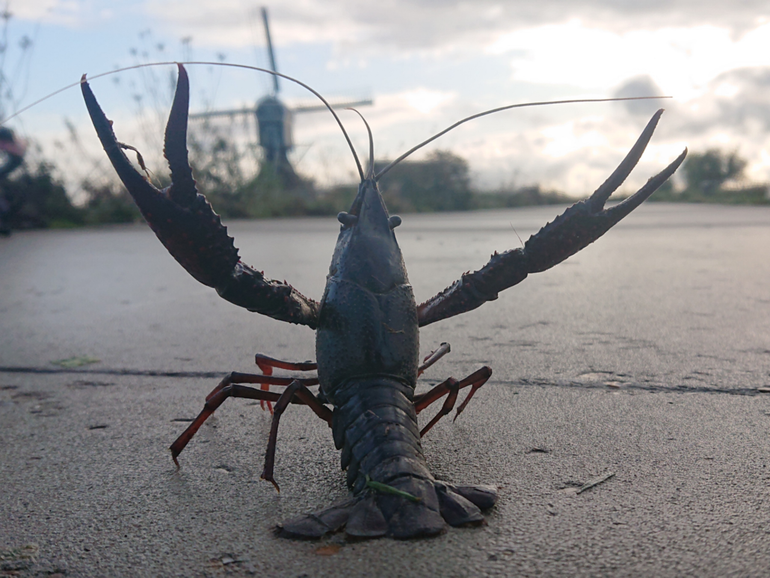
Will the marbled crayfish become the next successful invasive crayfish?
Naturalis Biodiversity CenterThe arrival of non-indigenous species can have negative consequences for our biodiversity and economy. They could eat all the aquatic plants in a system, which in turn leads to poor water quality. They also dig holes that can damage river banks. Farmers can lose land as a result. Knowledge about the functional characteristics of species is needed to reduce such consequences. This knowledge can help to predict the risks of non-indigenous species becoming invasive. A recent study conducted by the University of Amsterdam and Naturalis Biodiversity Center examined thirteen different characteristics of fifteen species of crayfish that occur in the wild or are traded in the Netherlands, six of which are successful invasive species.

Why invasive species are so successful
A comparison of the characteristics of all species revealed that the distinguishing characteristics for successful and unsuccessful invasive species are mainly: a broad environmental tolerance, originating from a temperate climate in the native range, a high migration capacity, and producing many eggs several times per year or making use of asexual reproduction.
Whether a newcomer has any chance of being successful in the Netherlands, depends on its characteristics. Species that are already used to a temperate climate in their native habitat find it easier to live here, and species that can reproduce faster - especially if they can do that asexually, and/or several times per year - spread faster over a new area. Being able to cope well with different environments also helps: tolerating slightly less oxygen or a somewhat higher salinity of the water, for example.


Different species have different characteristics
Not all successful invasive species have the same characteristics. For example, the red swamp crayfish (Procambarus clarkii) produces many offspring, migrates over long distances and exhibits aggressive behavior: in 2017 the police in Leidschendam had to ask people to stop calling about the 'scorpions' on the street. The spinycheek crayfish (Faxonius limosus) is adapted to a colder climate, can reproduce asexually, and has a broad environmental tolerance.
Knowledge about the characteristics of species can help to predict the risks of non-indigenous species becoming invasive. Based on this research, we expect that the marbled crayfish (Procambarus virginalis) could become a next successful invasive species in the Netherlands. This species suddenly emerged in the German aquarium trade in the 1990s and has already been spotted in the Netherlands in the wild.
More information
The full article can be read here: Functional traits explain crayfish invasive success in the Netherlands
Text: Tiedo van Kuijk, Naturalis Biodiversity Center, University of Amsterdam, Koos Biesmeijer, Naturalis Biodiversity Center, Berry van der Hoorn, Naturalis Biodiversity Center en Piet Verdonschot, University of Amsterdam
Photos: Bram Koese, EIS Kenniscentrum Insecten
